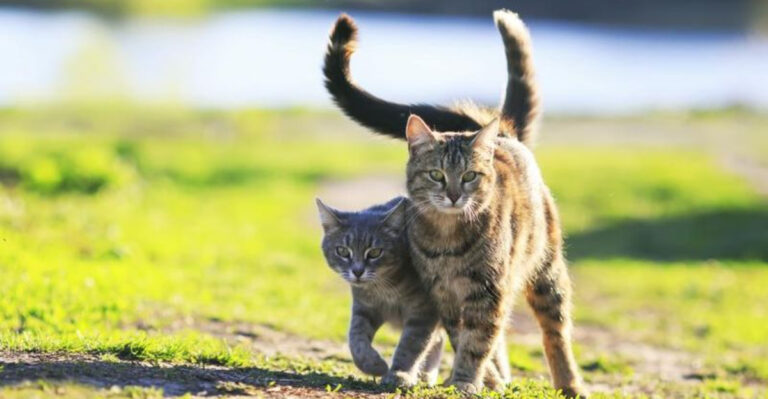15 Sensitive Dog Breeds That Can’t Stand Loud Noises And Chaos
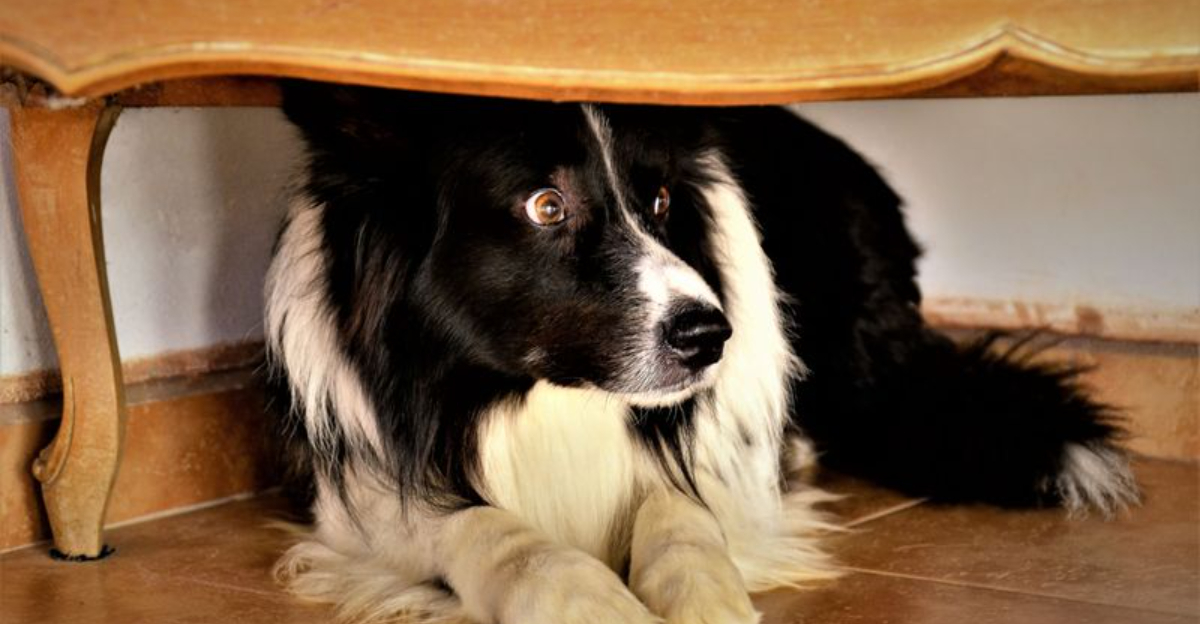
Some dogs are born with a more delicate temperament than others, making them especially vulnerable to loud sounds and chaotic environments.
These sensitive souls can experience genuine distress during thunderstorms, fireworks, or even just busy household activities.
Understanding which breeds tend to be more noise-sensitive can help you create a calmer home environment or choose a dog that matches your lifestyle.
1. Border Collies: The Hypersensitive Herders
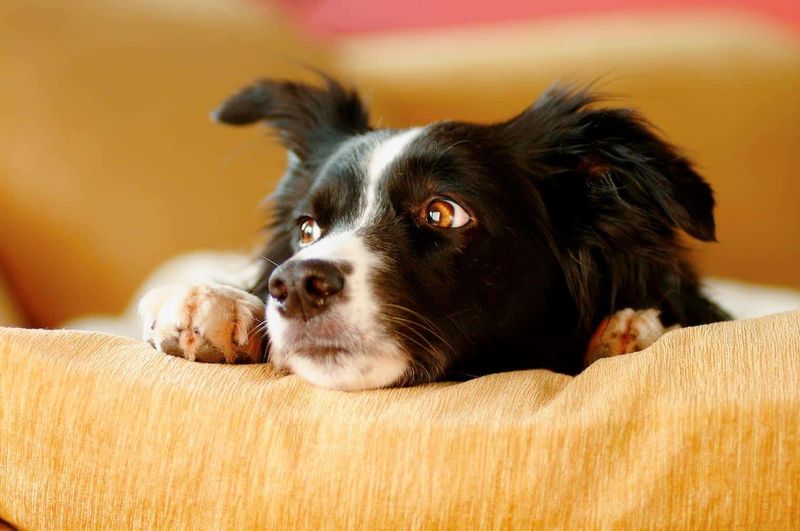
Border Collies possess an almost supernatural awareness of their surroundings that makes them excellent herders but terribly sensitive to chaos. Their highly-tuned nervous systems can interpret loud noises as potential threats, triggering anxiety responses.
Many Border Collie owners report their dogs hiding during thunderstorms or becoming visibly distressed by vacuum cleaners. Their intelligence works against them in noisy situations – they try to make sense of threatening sounds but can’t resolve the perceived danger.
Creating quiet spaces where these dogs can retreat is essential for their wellbeing. Consider noise-canceling techniques in your home if you share your life with one of these sensitive herders.
2. Greyhounds: Racing Champions With Delicate Nerves

Behind their athletic build and racing history, Greyhounds harbor surprisingly fragile emotions. These elegant speedsters often freeze or tremble when confronted with unfamiliar sounds or hectic environments.
Their thin skin and minimal body fat provide little insulation from sensory stimulation, making them physically more reactive to noise. Many rescued racing Greyhounds come with noise sensitivities developed during their track careers, where loud announcements and crowds created stressful associations.
Gentle introduction to normal household sounds helps these sensitive athletes adjust. Most Greyhound owners learn to warn their pets before turning on appliances or having guests over.
3. Shelties: Small Dogs With Big Sound Sensitivities

Shetland Sheepdogs might look like miniature Collies, but their reaction to noise can be anything but small. These fluffy companions often display extreme sensitivity to everything from doorbells to dishwashers, sometimes developing noise phobias that worsen with time.
Their herding heritage contributes to their alertness, but also makes them jumpy around unexpected sounds. A Sheltie’s ears can detect frequencies humans miss entirely, amplifying their noise sensitivity.
Many Sheltie owners create “safe rooms” with sound dampening features where their dogs can retreat during storms or celebrations. Early socialization with various sounds can help, but their sensitive nature often remains throughout their lives.
4. Cavalier King Charles Spaniels: Royal Companions With Delicate Dispositions
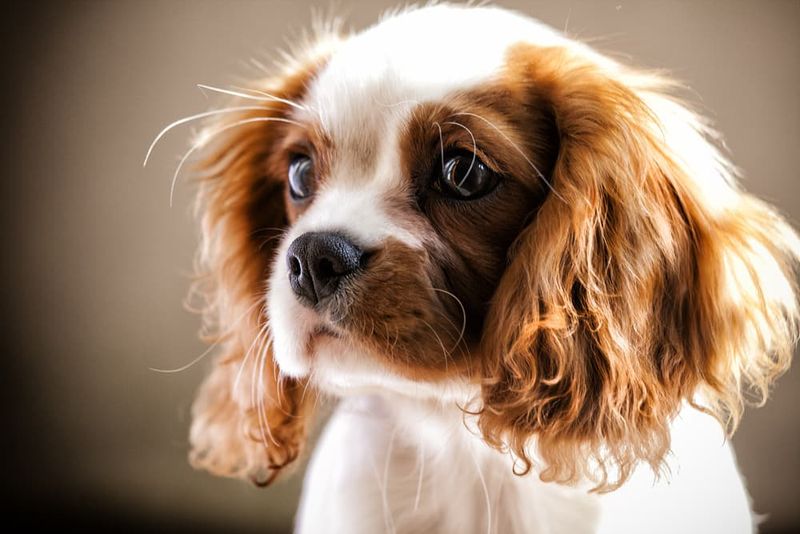
With their soulful eyes and silky ears, Cavalier King Charles Spaniels weren’t bred for anything more strenuous than warming laps in royal courts. This gentle breeding history left them ill-equipped for the harsh sounds of modern life.
Cavaliers frequently develop noise aversions that manifest as trembling, hiding, or even digestive issues during stressful sound events. Their long ears not only look adorable but actually funnel sound more efficiently to their eardrums, potentially making noises seem louder to them.
Owners often find success with gentle sound desensitization training and creating predictable routines. These sweet-natured dogs thrive in households where chaos is kept to a minimum.
5. Chihuahuas: Tiny Bodies With Enormous Sound Anxiety
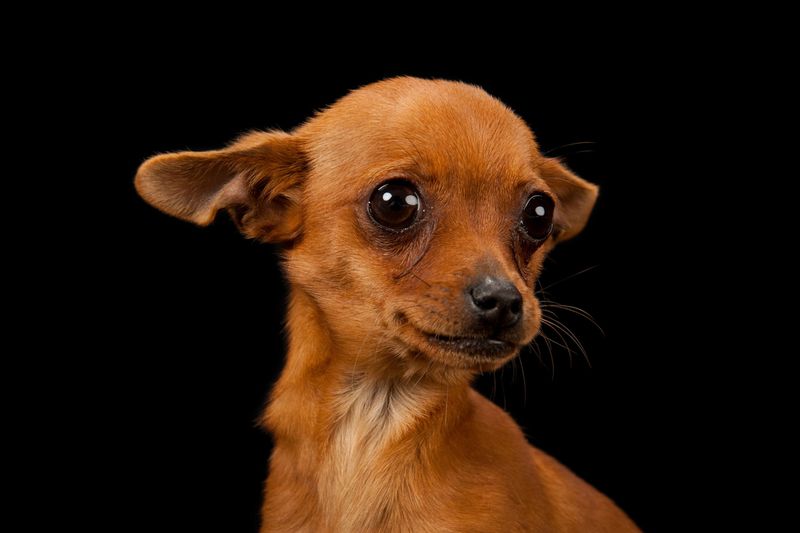
Don’t let their feisty reputation fool you – Chihuahuas often mask their fear with bravado. These pocket-sized pups experience the world as much bigger and louder than larger breeds do, simply due to their diminutive size.
A Chihuahua’s tiny body contains the same auditory equipment as much larger dogs, making sounds relatively more intense for them. Many develop shaking, barking, or even aggressive responses to startling noises as protective mechanisms.
Carrying cases lined with soft material provide mobile safe spaces for these little ones during noisy outings. Their small bladders are particularly reactive to stress, so noise-sensitive Chihuahuas often need extra potty breaks during thunderstorms or fireworks displays.
6. Borzois: Aristocratic Hounds With Refined Sensibilities
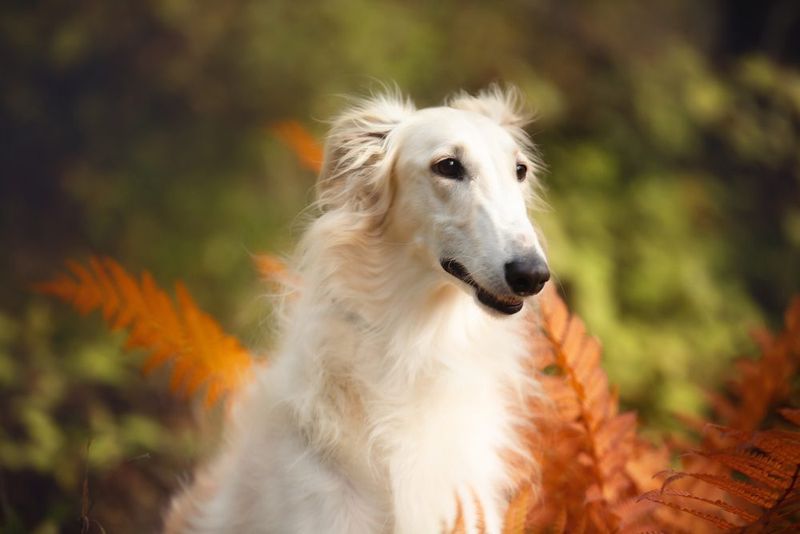
Borzois carry themselves with the quiet dignity of Russian nobility, and they expect their surroundings to match their refined temperament. These elegant sighthounds often respond to chaos with aloof withdrawal or visible discomfort.
Their long, narrow skulls house particularly sensitive ears that can make everyday noises seem overwhelming. You’ll rarely hear a Borzoi barking, but their body language speaks volumes when they’re distressed by noise – they become statues of anxiety, frozen in place.
Owners find that classical music or white noise machines help mask disruptive sounds. Despite their size, many Borzois believe they’re lap dogs during frightening noise events, seeking comfort from their favorite humans.
7. Australian Shepherds: Brainy Herders Overwhelmed By Chaos

Australian Shepherds process information at lightning speed, which becomes a liability in noisy environments. Their herding brains try to organize and make sense of every sound, leaving them mentally exhausted in chaotic situations.
When confronted with too much auditory input, Aussies may resort to herding behaviors, nipping at heels or circling frantically. Their multicolored eyes seem to reflect the confusion they feel when sounds become overwhelming.
Mental enrichment activities in quiet settings help these intelligent dogs burn energy without sensory overload. Many Australian Shepherd owners report their dogs seeking out bathroom tubs or tile floors during storms – the grounding sensation and acoustic properties provide comfort.
8. Basset Hounds: Those Ears Hear Everything

Basset Hounds might look laid-back, but their extraordinary ears make them surprisingly sound-sensitive. Those iconic long ears weren’t just designed for looks – they funnel sounds directly to the ear canal with remarkable efficiency.
When overwhelmed by noise, Bassets often respond by howling along or retreating to quiet spaces. Their droopy faces become even more forlorn when they’re distressed by chaotic environments.
Their low-to-the-ground perspective makes loud overhead noises particularly startling. Many Basset owners discover that thunder shirts or anxiety wraps provide comfort during storms or fireworks, giving these sensitive hounds a feeling of security when their exceptional hearing works against them.
9. Maltese: Delicate Lapdogs With Noise Aversions
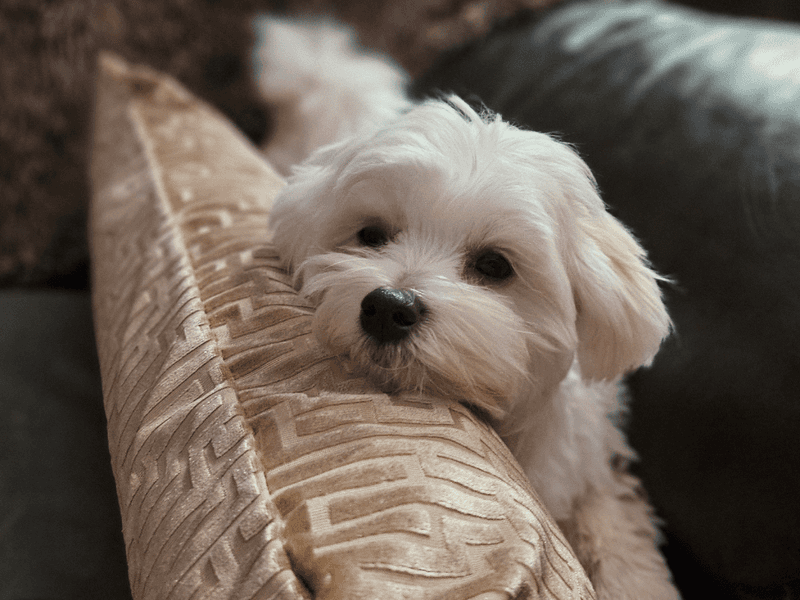
Maltese dogs have been bred for thousands of years with one job description: be adorable companions. This specialized breeding never prepared them for the cacophony of modern life, leaving many noise-phobic.
Their small size contributes to their sensitivity – everything seems bigger and louder to these tiny white fluffballs. When frightened by sounds, a Maltese might tremble so violently that owners often mistake it for a medical emergency.
Creating predictable sound routines helps these sensitive companions cope with daily life. Many Maltese owners find success with “sound sanctuaries” – small, comfortable spaces with sound-dampening features where their dogs can retreat when feeling overwhelmed by the noisy human world.
10. Whippets: Speed Demons With Nervous Systems To Match
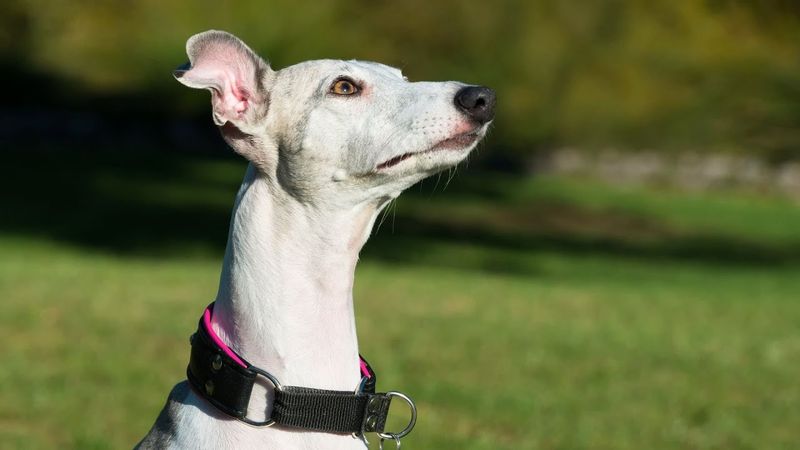
Whippets may be built for speed, but their nervous systems are calibrated for sensitivity. These sleek sighthounds possess skin so thin you can see their veins, which hints at their equally delicate emotional makeup.
During loud events, Whippets often shake uncontrollably or attempt to escape, sometimes injuring themselves in panic. Their racing hearts – already naturally faster than many breeds – can reach concerning rates when they’re stressed by noise.
Compression garments like thunder shirts provide remarkable comfort to these slender dogs. Many Whippet owners become amateur meteorologists, tracking storms days in advance to prepare their sensitive companions for the auditory onslaught that sends them into a state of panic.
11. Papillons: Butterfly Ears Catch Every Sound
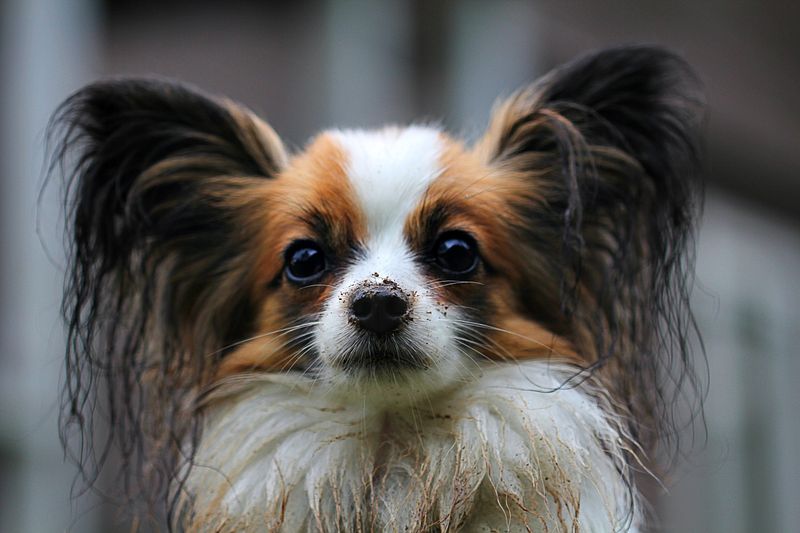
Those distinctive butterfly-shaped ears aren’t just for show – Papillons have some of the most efficient sound-capturing equipment in the dog world. Their erect, mobile ears can swivel toward even the faintest noises, making loud sounds particularly overwhelming.
Despite their tiny size, Papillons are intelligent problem-solvers who create their own coping mechanisms for noise. Many learn to burrow under blankets during storms or find the acoustically quietest room in the house.
Their expressive faces telegraph their distress clearly when sounds become too much. Papillon owners often create “sound schedules,” introducing potentially frightening noises at predictable times so these sensitive dogs can mentally prepare for auditory challenges.
12. Salukis: Ancient Hounds With Modern Sensitivities

As one of the world’s oldest dog breeds, Salukis evolved in the quiet deserts of the Middle East, not our cacophonous modern world. Their refined demeanor masks an extremely sensitive nature that finds chaos and loud noises genuinely distressing.
A Saluki’s reaction to overwhelming sounds is often subtle – they don’t make a scene, but instead withdraw emotionally or physically. Their almond-shaped eyes can take on a distant, almost dissociative look when they’re processing auditory overload.
These ancient sighthounds respond well to gentle routine and predictability. Many Saluki owners discover that providing elevated resting places helps their dogs feel more secure during noisy events – perhaps tapping into their desert heritage where high vantage points meant safety.
13. Great Danes: Gentle Giants With Surprising Sound Fears

Despite their imposing size, Great Danes often possess the most tender hearts and sensitive ears. These gentle giants can be reduced to quivering masses of anxiety during thunderstorms or fireworks displays.
Their size actually works against them during noise events – they can’t hide in small spaces for comfort like smaller breeds. Many Great Dane owners have stories of their massive dogs attempting to crawl into their laps or under furniture too small for them during frightening noise episodes.
The contrast between their powerful appearance and noise sensitivity often catches owners by surprise. Creating designated quiet zones with room for their substantial bodies helps these big-hearted dogs cope with their surprisingly delicate nervous systems.
14. Vizslas: Velcro Dogs Undone By Noise
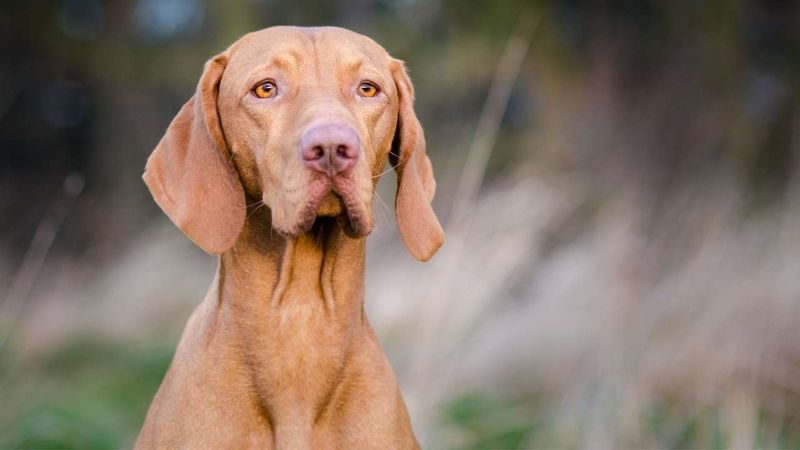
Known for sticking to their owners like velcro, Vizslas form intense emotional bonds that make any perceived threat – including loud noises – deeply disturbing to them. Their attachment style means they look to their humans for cues about how to react to frightening sounds.
When confronted with chaos or noise, a Vizsla’s typical response is to become even more clingy, sometimes attempting to climb into their owner’s clothing. Their thin coats and lean bodies offer little insulation from sensory input, making them physically more reactive to environmental stressors.
Consistency in routine helps these sensitive Hungarian pointers feel secure. Many Vizsla owners find success with “safe sound” training – pairing potentially scary noises with positive experiences to reshape their dog’s emotional response.
15. Cocker Spaniels: Silky Ears That Capture Every Sound

Those gorgeous, flowing ears that make Cocker Spaniels so recognizable also make them particularly vulnerable to noise sensitivity. Their ear structure amplifies sounds and funnels them directly to the eardrum, intensifying everything from thunderclaps to household appliances.
When overwhelmed by noise, Cockers often display displacement behaviors like excessive licking or air snapping. Their expressive eyes seem to plead for help during chaotic situations.
Ear cleaning becomes especially important for noise-sensitive Cockers, as ear infections can heighten their sound reactivity. Many owners find success with gradual sound desensitization training and creating consistent household routines that make their auditory world more predictable and less frightening.






